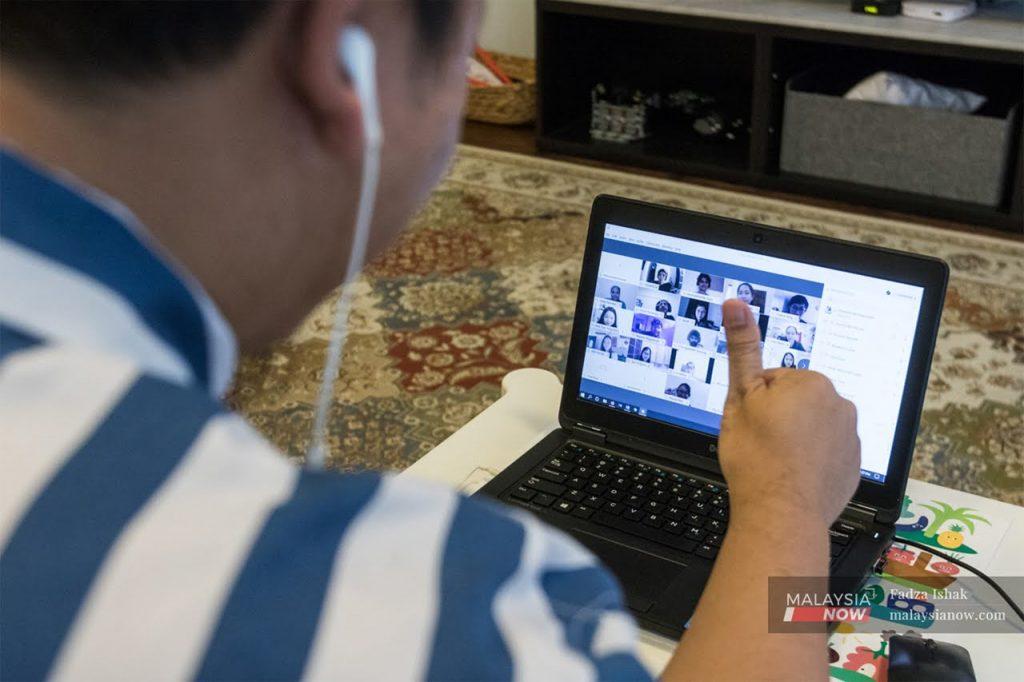The dark side of working from home
While working from home is associated with convenience and comfort, it can also be difficult for those struggling to shift their entire workload online.
While working from home has brought with it a slew of benefits including less time spent in traffic and more money saved on parking and lunch, other side effects have followed as well, including a higher workload as the Covid-19 pandemic forces professionals in many fields to rethink the way things used to be done.
This is especially apparent in the education sector where face-to-face classes for much of the year were replaced by online lectures as spikes in infections kept students and teachers alike at home.
One lecturer with whom MalaysiaNow spoke said prep time for classes had doubled since sessions were moved online early this year.
Zailani, who teaches at a public university, said moving lectures online takes much more time and planning than conducting in-hall lectures.
Depending on the subject, it could take up to four hours just to prepare the content whereas a normal class would usually take between 30 minutes and two hours.
“For us to create a video, we had a one-day workshop on how to edit videos but not all of us could master that in just one day!”
Even after the lessons are uploaded, it is not always smooth sailing.
Hisham, who also lectures at a public university, said online classes depend heavily on good internet connection.
“There always seem to be internet problems which affect the running of classes,” he told MalaysiaNow. “This causes classes to start late, and some parts are repeated due to audio problems.
“It’s also difficult to get 100% attendance because some students can’t access the classes due to internet issues.”
There is also the stress for some of being technologically challenged.
“For us to create a video, we had a one-day workshop on how to edit videos but not all of us could master that in just one day!” Hisham said.
Not all material is conveyed through video or conference call-styled sessions. Some is delivered through the Learning Management System or LMS. But even this can cause lecturers a lot of trouble.
“There always seem to be internet problems which affect the running of classes.”
“Traditionally, lecturers print out quizzes and hand them out to students,” Hisham said.
“But using the LMS, questions and answers have to be individually programmed into the system based on criteria such as the type of question.”
This takes a long time, especially for lecturers who are not familiar with the system.
Lecturers at private universities do not face the same constraints in terms of which software or system is used for online classes. But for them, too, the workload has soared since the shift online.
One issue is the need for supporting infrastructure. While classes and assignments must be moved online, figuring out how to make the shift can be time-consuming.
Some course components like discussions, quizzes and exams are by nature difficult to conduct online which forces lecturers to come up with online-based solutions and alternatives, Chris who teaches at a private university told MalaysiaNow.
This is an even bigger problem for medical lecturers as a key part of training for doctors and other healthworkers is normally hands-on.
Dr Farouk Musa, who lectures at Monash University, gave the example of anatomy classes.
“Teaching this is challenging as students don’t have the specimens in front of them,” he told MalaysiaNow.
“So there is no sense of touch. Everything must be based on reconstructed images and imagination, which poses a real challenge to appreciating anatomy as it is.”
Farouk, who described the 2020 academic year as “annus horribilis”, added that lecturers have had to be content with merely meeting students online.
At the end of the day, this, for lecturers, might be the most difficult part of working from home.
“The face-to-face element is important in lectures, and in online lectures with class sizes of 100 to 200 students, interactions become very impersonal,” Chris said.
Zailani put it more bluntly. “I’m not sure if students pay attention in online classes or not. Teaching is not the same when students are not in front of you.”
Subscribe to our newsletter
To be updated with all the latest news and analyses daily.
